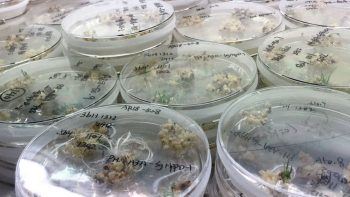Jon Cohen in Science:
 Variations of the genome editor CRISPR have wowed biology labs around the world over the past few years because they can precisely change single DNA bases, promising deft repairs for genetic diseases and improvements in crop and livestock genomes. But such “base editors” can have a serious weakness. A pair of studies published online in Science this week shows that one kind of base editor causes many unwanted—and potentially dangerous—“off-target” genetic changes. The mistakes are still rare overall, says David Liu, a chemist at Harvard University whose team developed the first generation of base editors, and are unlikely to interfere with laboratory uses of the technology. But they are enough to concern anyone contemplating use of the technology in patients, Liu and others say. “The two papers are very interesting and important,” says Jin-Soo Kim, a CRISPR researcher at Seoul National University. “It is now important to determine which component is responsible for the collateral mutations and how to reduce or avoid them.”
Variations of the genome editor CRISPR have wowed biology labs around the world over the past few years because they can precisely change single DNA bases, promising deft repairs for genetic diseases and improvements in crop and livestock genomes. But such “base editors” can have a serious weakness. A pair of studies published online in Science this week shows that one kind of base editor causes many unwanted—and potentially dangerous—“off-target” genetic changes. The mistakes are still rare overall, says David Liu, a chemist at Harvard University whose team developed the first generation of base editors, and are unlikely to interfere with laboratory uses of the technology. But they are enough to concern anyone contemplating use of the technology in patients, Liu and others say. “The two papers are very interesting and important,” says Jin-Soo Kim, a CRISPR researcher at Seoul National University. “It is now important to determine which component is responsible for the collateral mutations and how to reduce or avoid them.”
In its original form, CRISPR uses an RNA strand to guide an enzyme known as Cas9 to a specific place in a genome. The Cas9 acts as a molecular scissors on the DNA, cutting both of its strands, and the cell’s attempts to repair the brake can disable the gene. Or researchers can use the cut to insert a new sequence of DNA. Base editors instead couple the guide RNA to a Cas9 that only cuts one DNA strand. This molecular complex also includes an enzyme, called a deaminase, that can chemically change one base into another. Because such editors have more control over the specific changes than CRISPR itself, researchers did not expect them to cause off-target errors.
More here.
